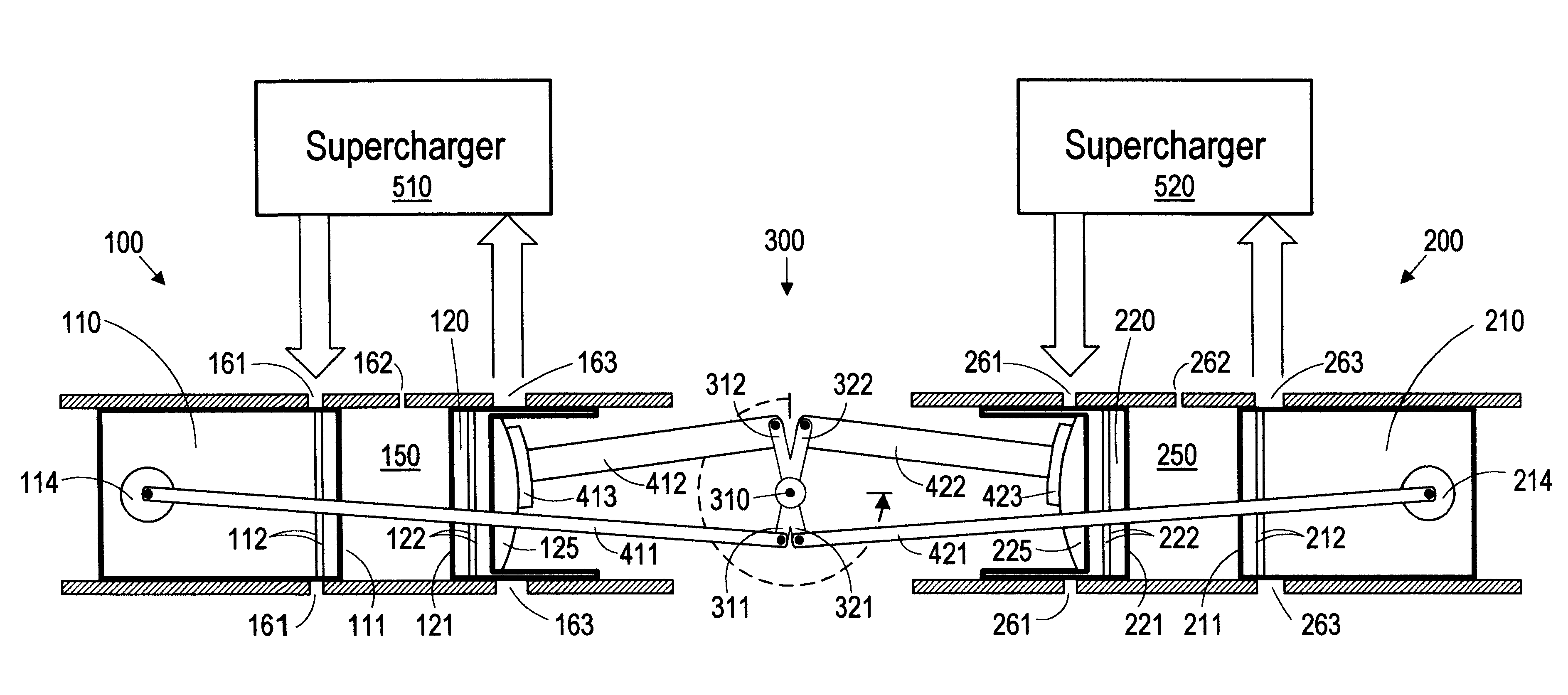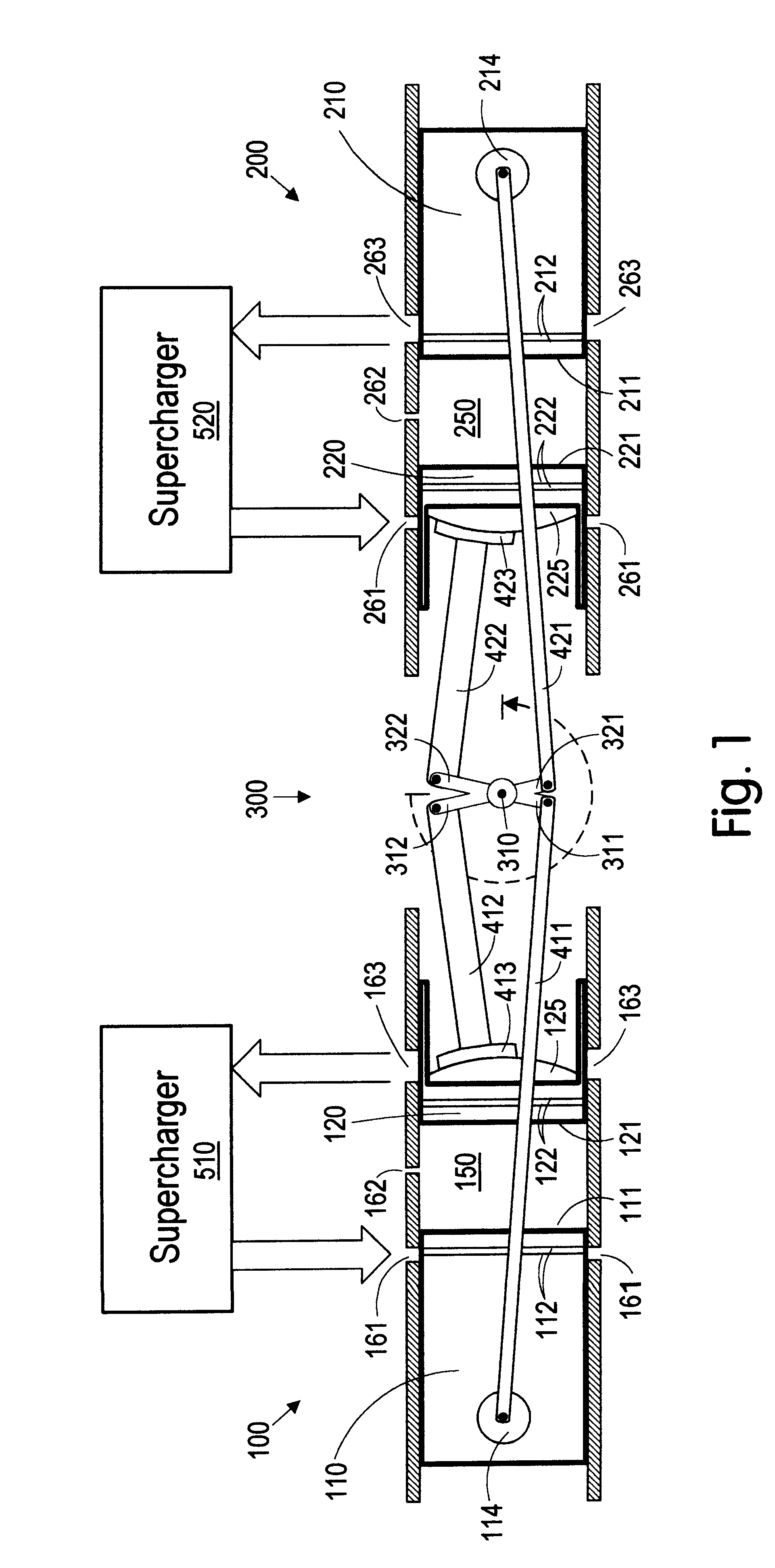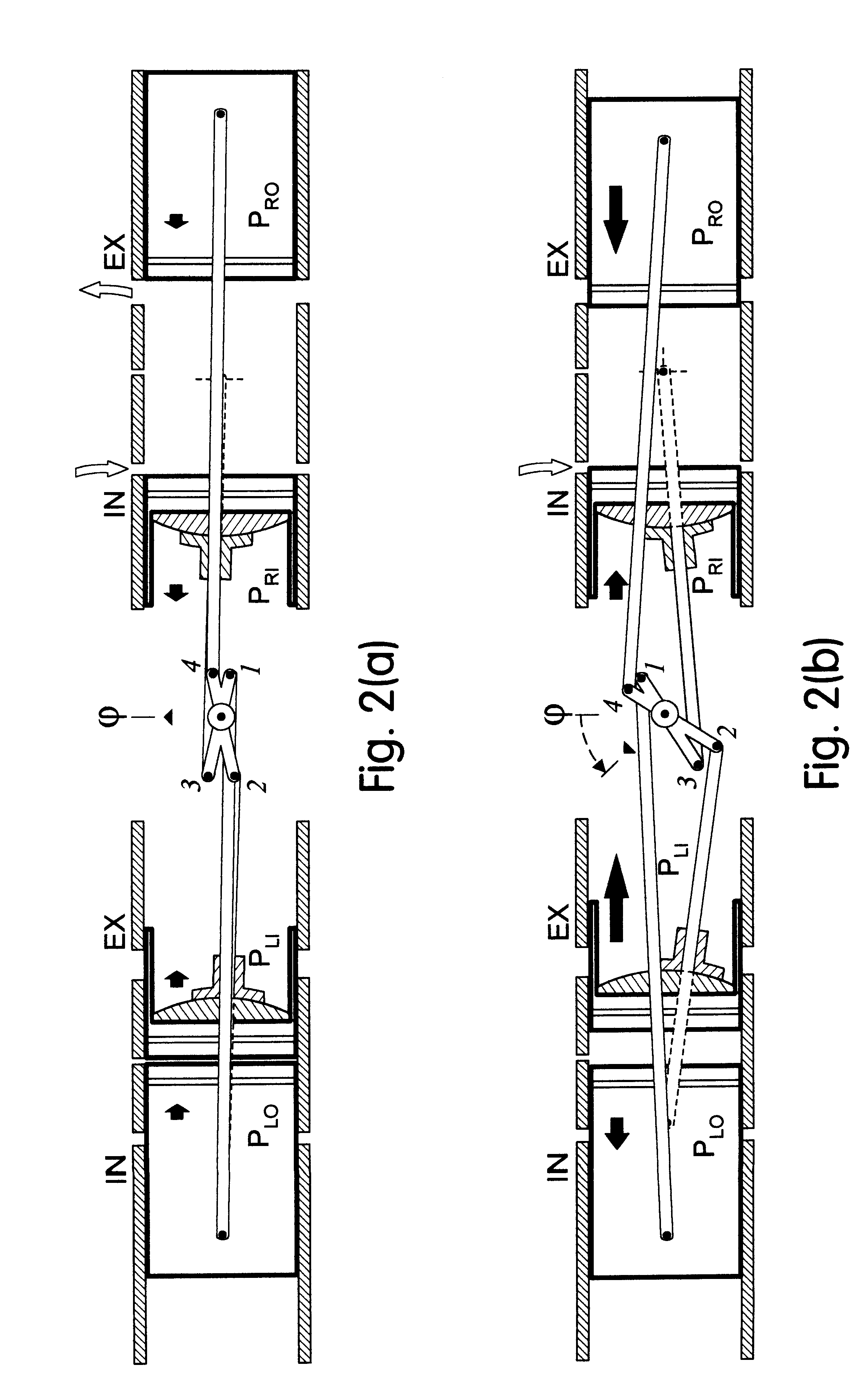Internal combustion engine with a single crankshaft and having opposed cylinders with opposed pistons
a technology of opposed pistons and internal combustion engines, which is applied in the direction of combustion engines, reciprocating piston engines, positive displacement engines, etc., can solve the problems of limiting the designers' options on how the engine is placed within the vehicle, reducing the efficiency of raw emissions, and reducing the efficiency of internal combustion engines
- Summary
- Abstract
- Description
- Claims
- Application Information
AI Technical Summary
Benefits of technology
Problems solved by technology
Method used
Image
Examples
Embodiment Construction
1. Overview
As illustrated in FIG. 1, the engine configuration of the present invention comprises a left cylinder 100, a right cylinder 200, and a single central crankshaft 300 located between the cylinders (for clarity, the supporting structure of the engine is omitted from FIG. 1).
The left cylinder 100 has an outer piston 110 and an inner piston 120, with combustion faces 111 and 121 respectively, the two pistons forming a combustion chamber 150 between them. The right cylinder 200 similarly has an outer piston 210, an inner piston 220, with combustion faces 211 and 221 and combustion chamber 250. Each of the four pistons 110, 120, 210, and 220 are connected to a separate eccentric on the crankshaft 300.
The outer piston 110 of the left cylinder is connected to crankshaft eccentric 311 by means of pullrod 411; the outer piston 210 of the right cylinder is similarly connected to crankshaft eccentric 321 by pullrod 421. While single pullrods are shown in FIG. 1, in the preferred embod...
PUM
 Login to View More
Login to View More Abstract
Description
Claims
Application Information
 Login to View More
Login to View More - R&D
- Intellectual Property
- Life Sciences
- Materials
- Tech Scout
- Unparalleled Data Quality
- Higher Quality Content
- 60% Fewer Hallucinations
Browse by: Latest US Patents, China's latest patents, Technical Efficacy Thesaurus, Application Domain, Technology Topic, Popular Technical Reports.
© 2025 PatSnap. All rights reserved.Legal|Privacy policy|Modern Slavery Act Transparency Statement|Sitemap|About US| Contact US: help@patsnap.com



